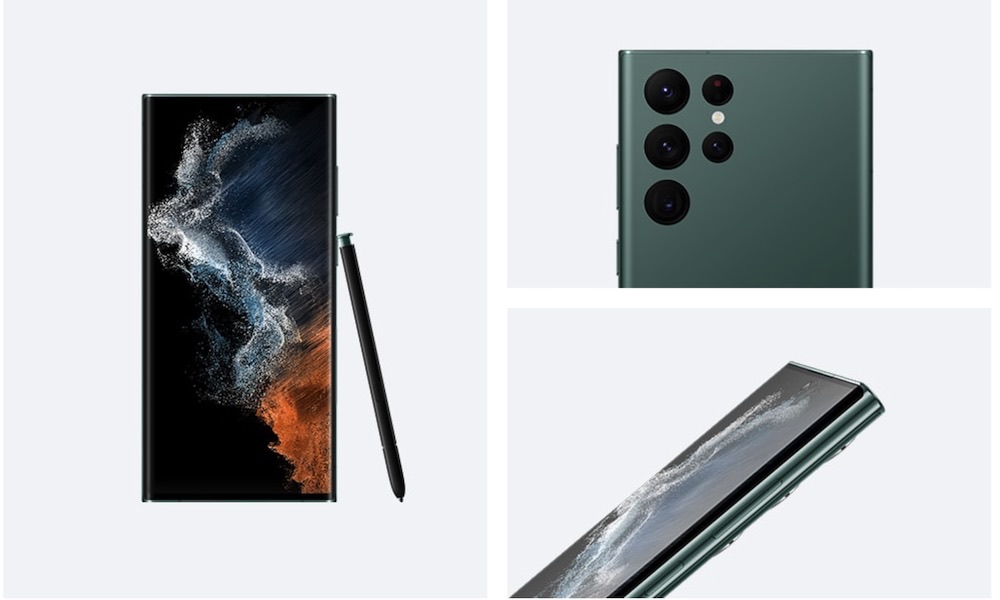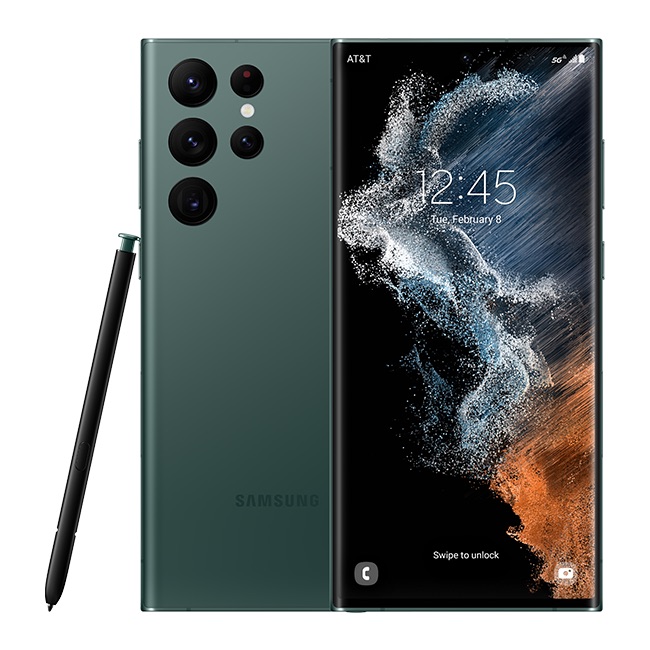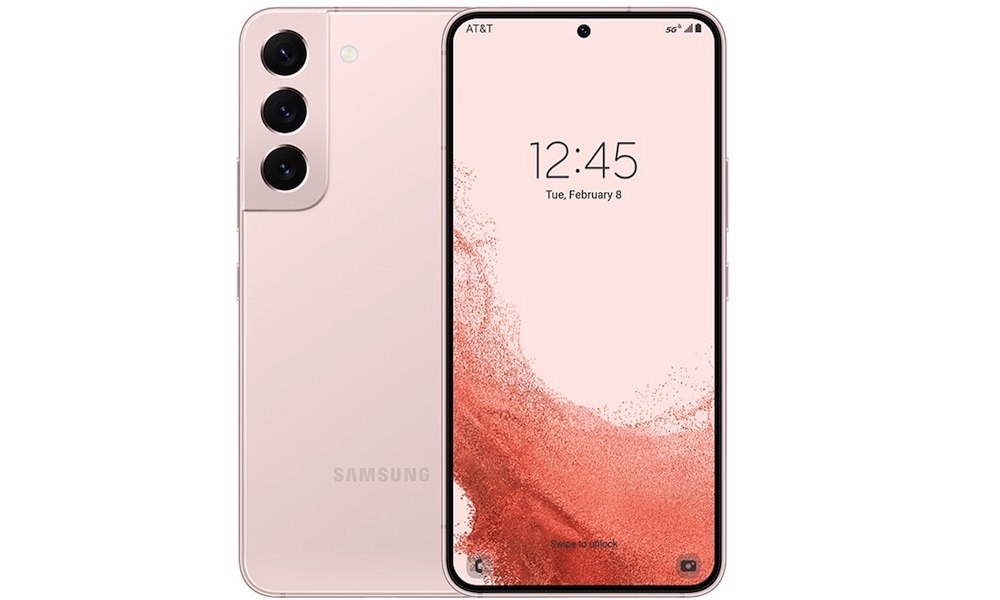How Do Samsung’s New Phones Stack Up? | Galaxy S22 Series vs. iPhone 13
 Credit: Samsung
Credit: Samsung
Toggle Dark Mode
It’s that time of year again when Samsung debuts its new lineup of flagship smartphones, and this year’s Galaxy S22 models are once again inviting the inevitable comparisons against Apple’s newest iPhone lineup.
So, leaving aside the obvious fact that Samsung’s devices run Android and Apple’s run iOS, how do they stack up in terms of the actual hardware? It’s always hard to get an accurate comparison. For one thing, Samsung is spec-obsessed and loves to throw out large numbers, while Apple prefers to focus on what the iPhone can do in more practical terms.
Further, if the past few years have proven anything, it’s that you just can’t always trust the numbers. Even so, it’s hard to argue with some of what Samsung is offering up in its latest premium devices.
Cameras | Galaxy S22 vs. iPhone 13
The two mainstays in Samsung’s lineup are the Galaxy S22 and S22 Plus, both of which are basically direct successors to last year’s equivalent S21 models. Samsung’s new Galaxy S22 Ultra, however, actually merges the best features of the Galaxy S21 Ultra with those of the 2020 Galaxy Note 20, creating the hybrid device that Note fans have been waiting for.
As is the case every year, the big improvements for both Apple and Samsung’s flagship devices are found in the camera systems, and the S22 is no exception.
The S22 and S22 Plus now both boast a 50-megapixel main camera that’s capable of capturing 8K footage at 24 FPS. Meanwhile, the S22 Ultra boasts the highest resolution of all, a 108-megapixel shooter that increases the potential resolution of still photos, but doesn’t do much for video. Like its two smaller siblings, the S22 Ultra still caps out at 8K/24 FPS recording.
In fact, apart from the higher megapixel count, the S22 Ultra appears to have all the same camera features, which are mostly based on computational photography anyway. This includes some new Samsung features that have been mainstays of the iPhone lineup for a couple of years now, including Portrait Night Mode photography.
To be clear, you’re also not actually going to be getting 108-megapixel photos. That would just be crazy. Instead, like its predecessors, the S22 Ultra uses a process called “nona-binning” that combines nine pixels into one. This effectively allows it to create the same effect as having a larger sensor, enhancing low-light photography and enabling features like Samsung’s well-known digital “Super Zoom.” It’s the same process Apple would likely use if rumours of a 48MP+ sensor on the next iPhone are true.
Samsung does have one unique trick up its sleeve, though. The rear camera supports auto-framing for up to 10 subjects, automatically adjusting the zoom to make sure that everybody is in the shot, without adding too much space around them. The downside of this, however, is that you can’t use it when recording video above Full HD at 30 fps. We’re guessing that’s beyond the limits of the Snapdragon 8 Gen 1 CPU that’s found inside these new smartphones.
Chips | Galaxy S22 vs. iPhone 13
This brings up one of the other big differentiators between the Galaxy S22 and the iPhone 13. While the Qualcomm Snapdragon 8 Gen 1 is no slouch, Apple’s A15 Bionic still runs circles around it. Samsung’s delivered an impressive array of camera hardware here, but we’re also guessing that Apple has simply decided that 8K video recording isn’t a priority for the iPhone — at least not yet.
With all the computational photography features baked into modern flagship smartphone lineups, it’s really not possible to glean much from raw camera specs anymore. For example, the 12-megapixel camera system on the iPhone 12 still beat out the Galaxy S21 Ultra, and the dual-lens system on the iPhone 13 even beat out the iPhone 12 Pro camera. We clearly live in an era when more powerful chips and algorithms win out over lenses and sensors.
However, it’s also fair to say that we’re approaching the point of diminishing returns. Year-over-year camera improvements are interesting, but we’re also long past the point of smartphone cameras that take pictures that are already beyond most people’s wildest expectations.
Professional photographic analysts can certainly pick apart the differences between the Galaxy S22 Ultra and the iPhone 13 Pro Max, but we don’t think the average person will be at all disappointed with the picture quality of either.
Displays | Galaxy S22 vs. iPhone 13
Samsung’s Galaxy S22 phones naturally use the company’s AMOLED screen technology, but in practical terms, this doesn’t make much difference over the standard OLED used in all the iPhone 13 models — many of which are also made by Samsung Display.
Where Samsung’s Galaxy S22 Ultra has a slight edge is in delivering more pixels. The S22 Ultra’s 6.8-inch display comes in at 3088 × 1440 versus the 2778 × 1284 of the 6.7-inch display on the iPhone 13 Pro Max. That works out to a pixel density of 501 ppi for the S22 Ultra versus 458 ppi for the iPhone 13 Pro Max.
However, it’s only the S22 Ultra that makes that leap. The 6.6-inch Galaxy S22 Plus actually has a lower resolution screen than even the 6.1-inch iPhone 13 and iPhone 13 Pro: 2340 × 1080 versus 2532 × 1170.
The standard Galaxy S22 offers the same resolution, but in a smaller 6.1-inch screen, which at least puts it a bit closer to the pixel density of the iPhone 13.
Notably, however, the entire S22 lineup offers displays capable of refresh rates of up to 120Hz. This is something that Apple users have to jump up to the iPhone 13 Pro to get their hands on. Samsung’s displays also go as low as 1Hz, which allows them to more effectively offer the kind of always-on-display features that iPhone users have long been waiting for.
Batteries | Galaxy S22 vs. iPhone 13
- Samsung has packed in even bigger batteries and faster charging speeds this year, with the S22 Ultra getting a whopping 5,000 mAh power cell.
- The entire lineup also supports wired charging at speeds of up to 45 watts — almost double what the iPhone 13 models are capable of.
It remains to be seen how much difference this is going to make in practical terms, however. As a rule, Android devices tend to be more power-hungry than their iPhone counterparts, simply because the Android operating system isn’t nearly as good at managing background processes. To be fair, that’s a tradeoff that many Android fans like, as it permits apps to run more freely in the background, allowing for things that aren’t achievable on iOS.
Prices and Capacities | Galaxy S22 vs. iPhone 13
Samsung’s Galaxy S22 lineup starts at $799.99 for the standard S22 or $999.99 for the S22 Plus, both in the 128GB versions.
The S22 Ultra starts at $1,199.99 for the 128GB, and runs up to $1,599.99 for the 1TB version.
While it’s not entirely a fair comparison due to the size difference, you can pick up an iPhone 13 mini for $699 in the same 128GB capacity, which is $100 less than Samsung’s most affordable Galaxy S22. The comparably sized iPhone 13 goes for basically the same $799 price tag, however.
Capacity upgrade prices run about the same, although it’s worth keeping in mind that the S22 and S22 Plus top out at 256GB. If you want more, you’ll be forced to go with the more expensive S22 Ultra, which offers 512GB and 1TB configurations. By comparison, the iPhone 13 mini and iPhone 13 offer 512GB models.
The most comparable model to the S22 Ultra is actually the iPhone 13 Pro Max, which starts at $1,099 for a 128GB version, or $100 less than the baseline S22 Ultra. These prices equal out once you reach the 1TB tier, however.
Of course, carrier deals and trade-ins will mix this up quite a bit, such that in the end, the pricing between Samsung’s S22 models and their iPhone 13 counterparts will work out to be close enough that most folks will make their decisions more on features and ecosystem than they will on price.











